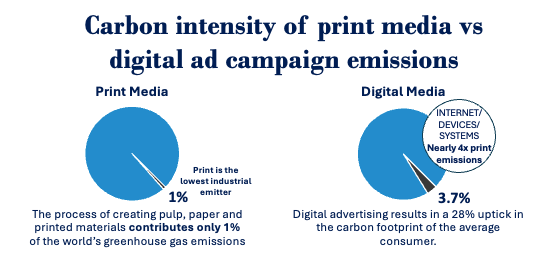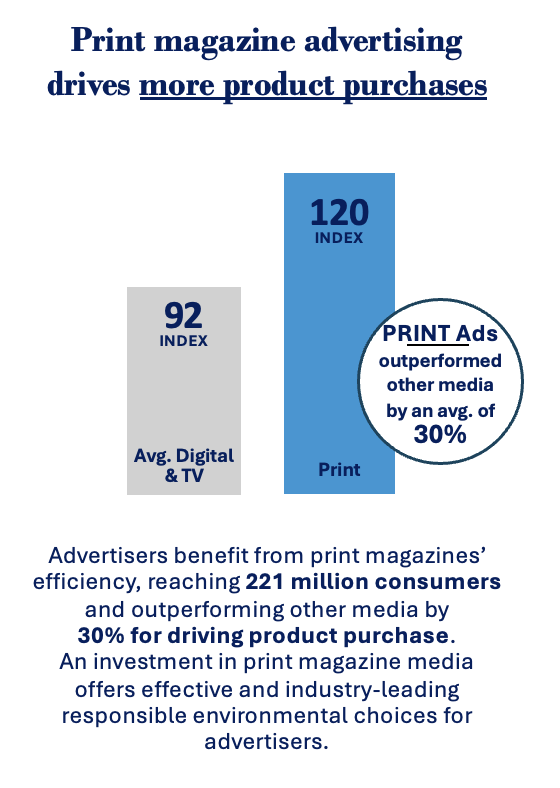In the ever-evolving landscape of media, the conversation around sustainability is more pertinent than ever. As we navigate the realms of print and digital media, it’s crucial to assess not just their commercial viability but also their environmental impact. This article delves into the sustainability of magazines as a media channel, comparing it with the carbon footprint of digital media, and highlighting the responsible choices made by publishers to ensure a greener future.
Magazine Media: A Low Environmental Impact Contender
Magazines have been a staple in media consumption for decades, offering a tangible connection to content that digital platforms strive to emulate. Beyond their aesthetic and tactile appeal, magazines stand out for their lower net impact on the environment. The process of creating pulp, paper, and printed materials is remarkably efficient, contributing only 1% to the world’s greenhouse gas emissions. This efficiency is further underscored by the fact that the paper used for magazines is 100% certified from sustainable sources, including a significant proportion from recycled materials. Furthermore, the forests from which this paper originates are managed under strict third-party certifications (such as PEFC, SFI, FSC), ensuring a responsible and regenerative approach to logging, with three times as many trees planted as harvested.

In contrast, digital media, encompassing internet usage, devices, and systems, has a significantly higher carbon footprint. Digital advertising in particular leads to a 28% increase in the carbon footprint of the average consumer. With internet, devices, and systems emissions nearly quadrupling those of print media, the sustainability of digital consumption becomes a pressing concern.
The Efficacy and Reach of Print Magazine Advertising
Beyond their environmental advantages, print magazines continue to demonstrate commercial effectiveness. Advertisers benefit from print’s efficiency, reaching an impressive 223.6 million consumers. Print ads outperform other media by an average of 30% in driving product purchases, making an investment in print magazine media not only an environmentally responsible choice but also a commercially astute one.

Sustainability Initiatives in the Print Industry
The print industry’s commitment to sustainability extends beyond responsible sourcing and emissions reduction. Leading publishers and printing companies have embraced comprehensive environmental initiatives, including achieving high recycling rates, pursuing certifications like the Forest Stewardship Council(FSC), and engaging in energy recovery practices. For instance, Quad/Graphics, a major printer for U.S. magazines, boasts a recycling rate of over 98%, encompassing paper, wood, metal, and more, and actively monitors its greenhouse gas production.
Moreover, magazines like Outside have pledged to become 100% carbon-neutral within five years, demonstrating a proactive approach to environmental stewardship and setting a commendable standard for the industry.
Conclusion: A Greener Path Forward
The juxtaposition of print and digital media’s environmental impacts offers valuable insights into sustainable media consumption. While digital platforms continue to grow, the print industry’s efforts to minimize its environmental footprint and its efficacy in reaching consumers present a compelling case for the continued relevance and responsibility of magazines as a media channel. By prioritizing sustainability, the magazine industry not only secures its place in a digital age but also contributes to a greener, more sustainable world.
Sources include Politico, World Resources Institute, Exchangewire, Energuide.be, Dotdash Meredith Production Team, American Forest and Paper Association, MPA Factbook, Hearst Sustainability Overview, and Outside Inc.’s commitment to a healthy planet.




